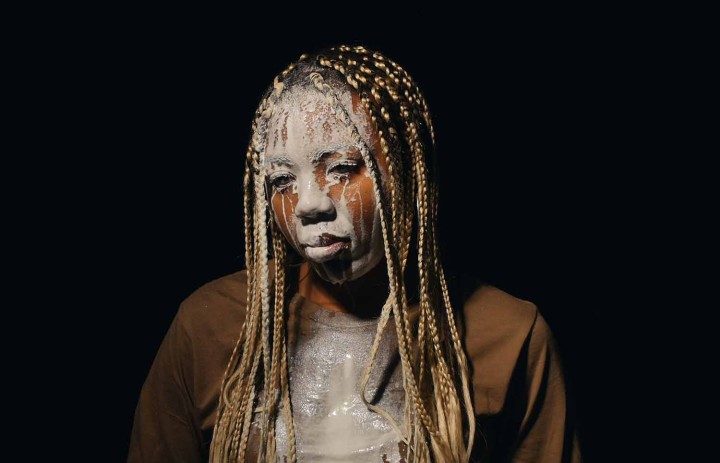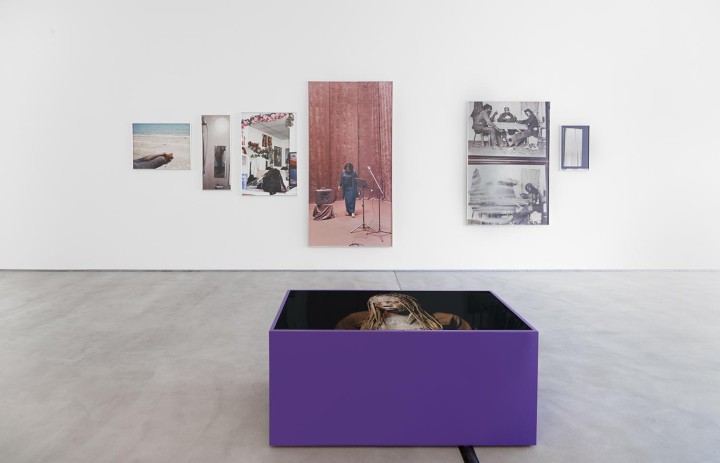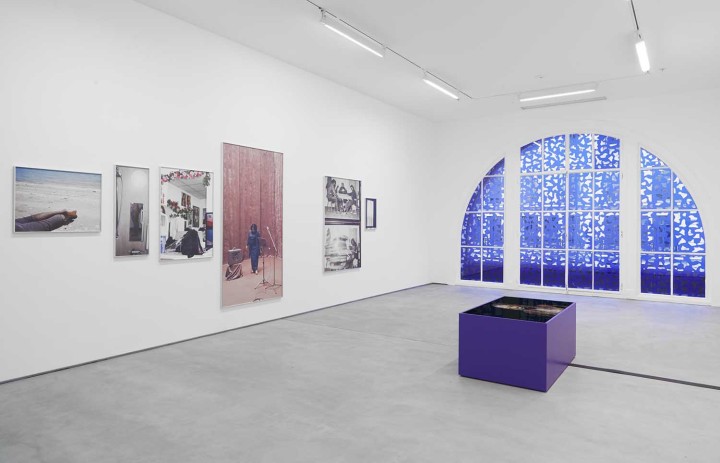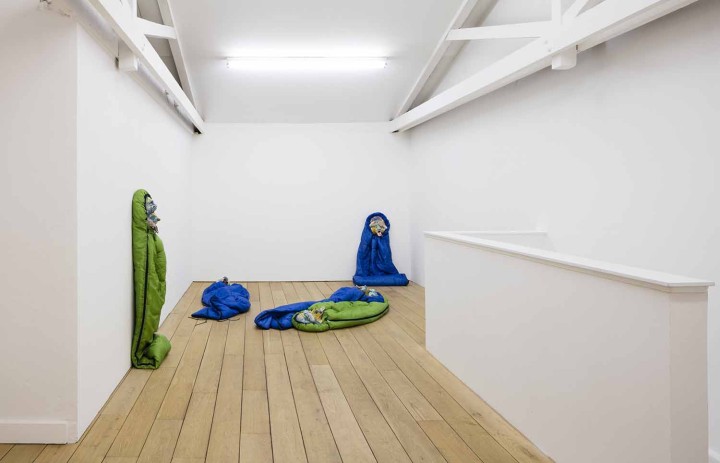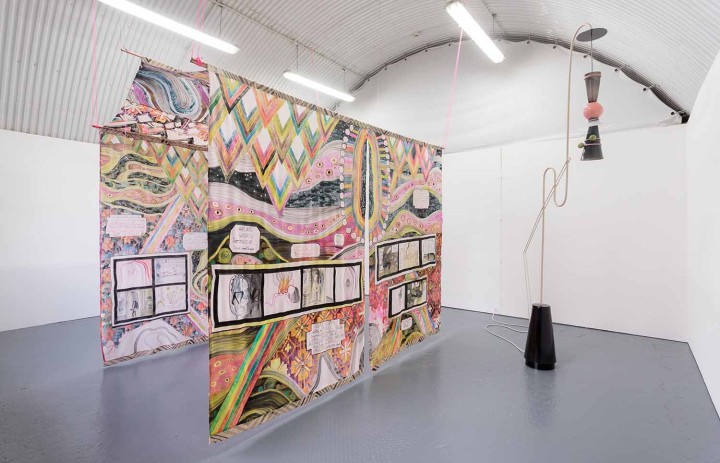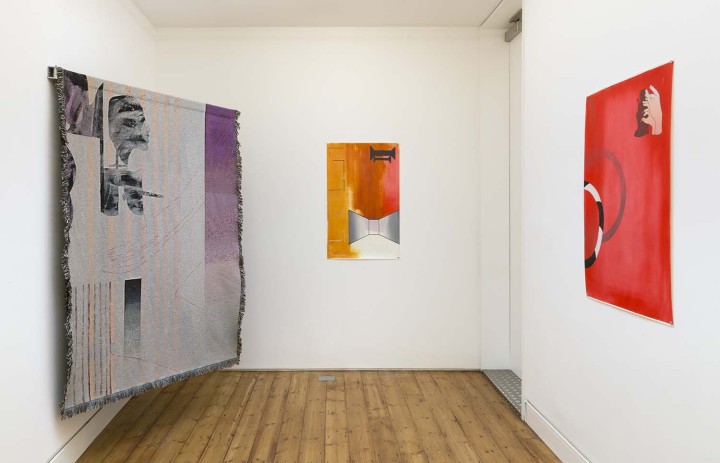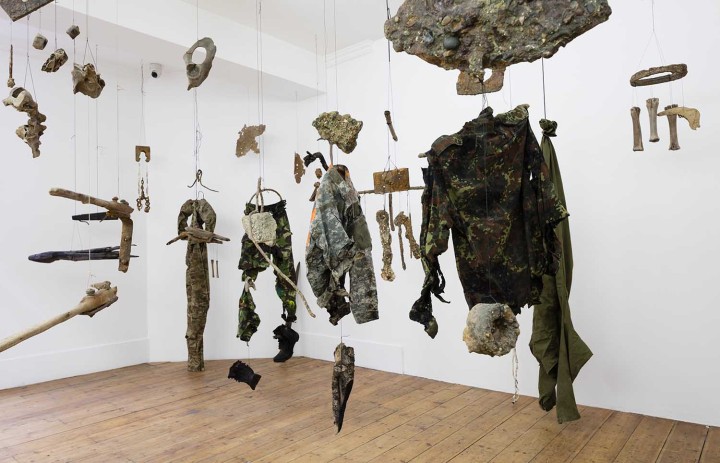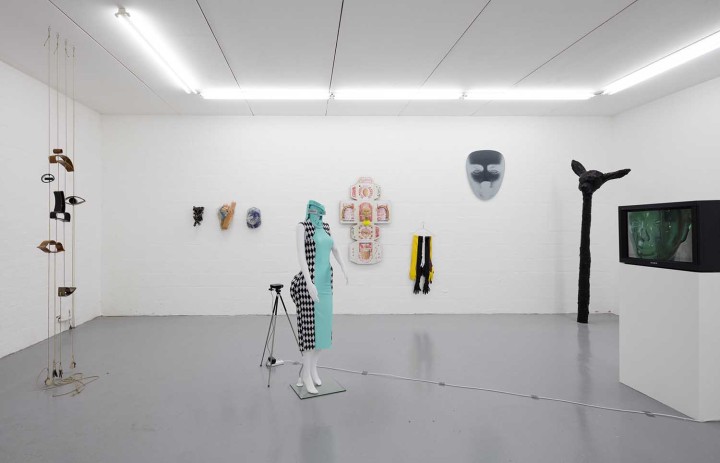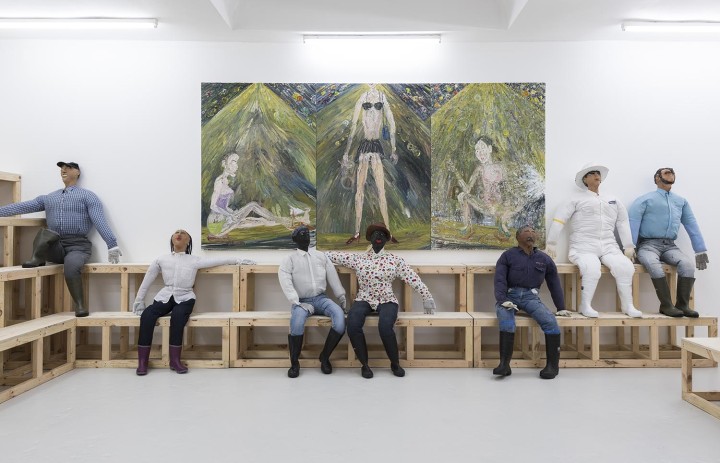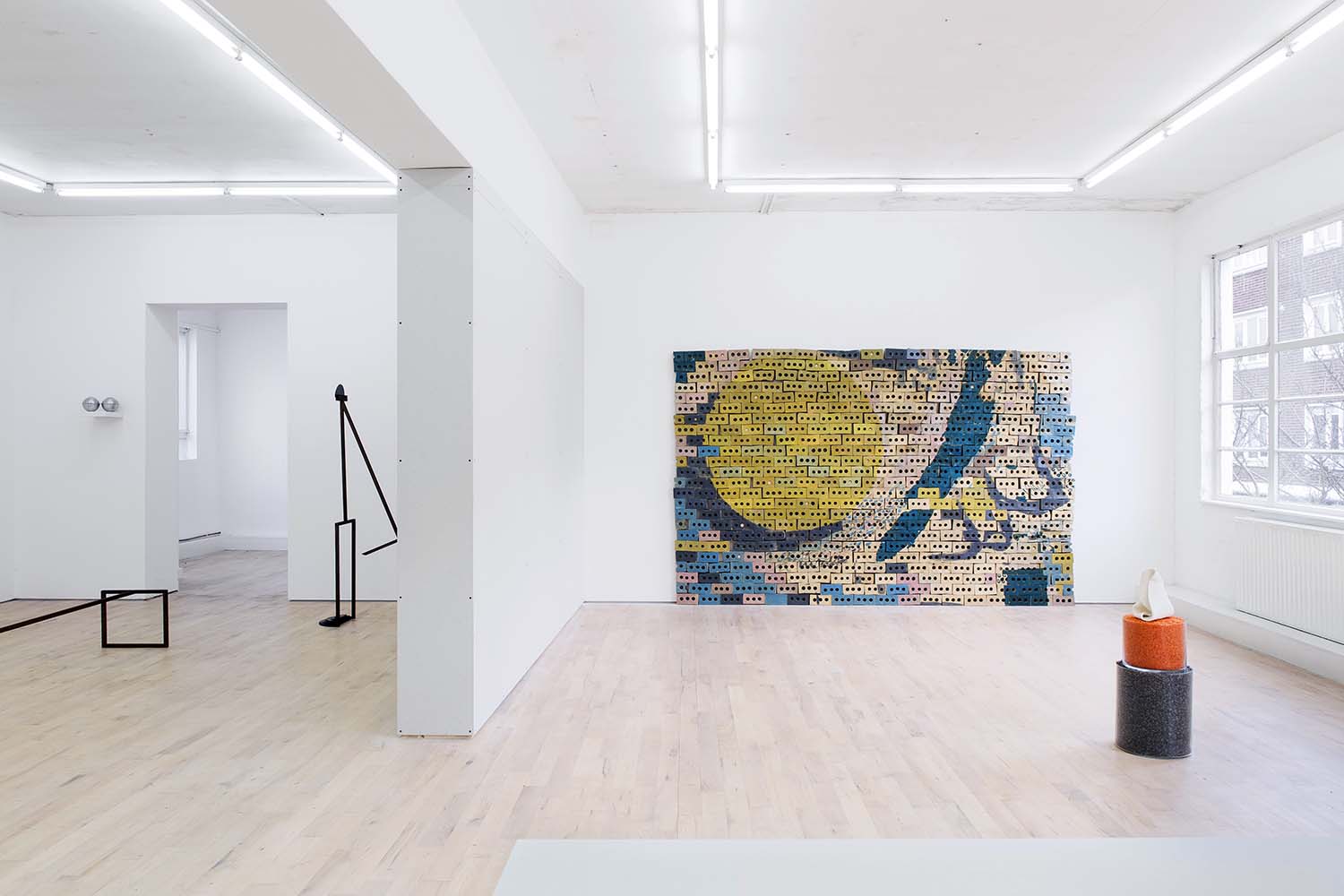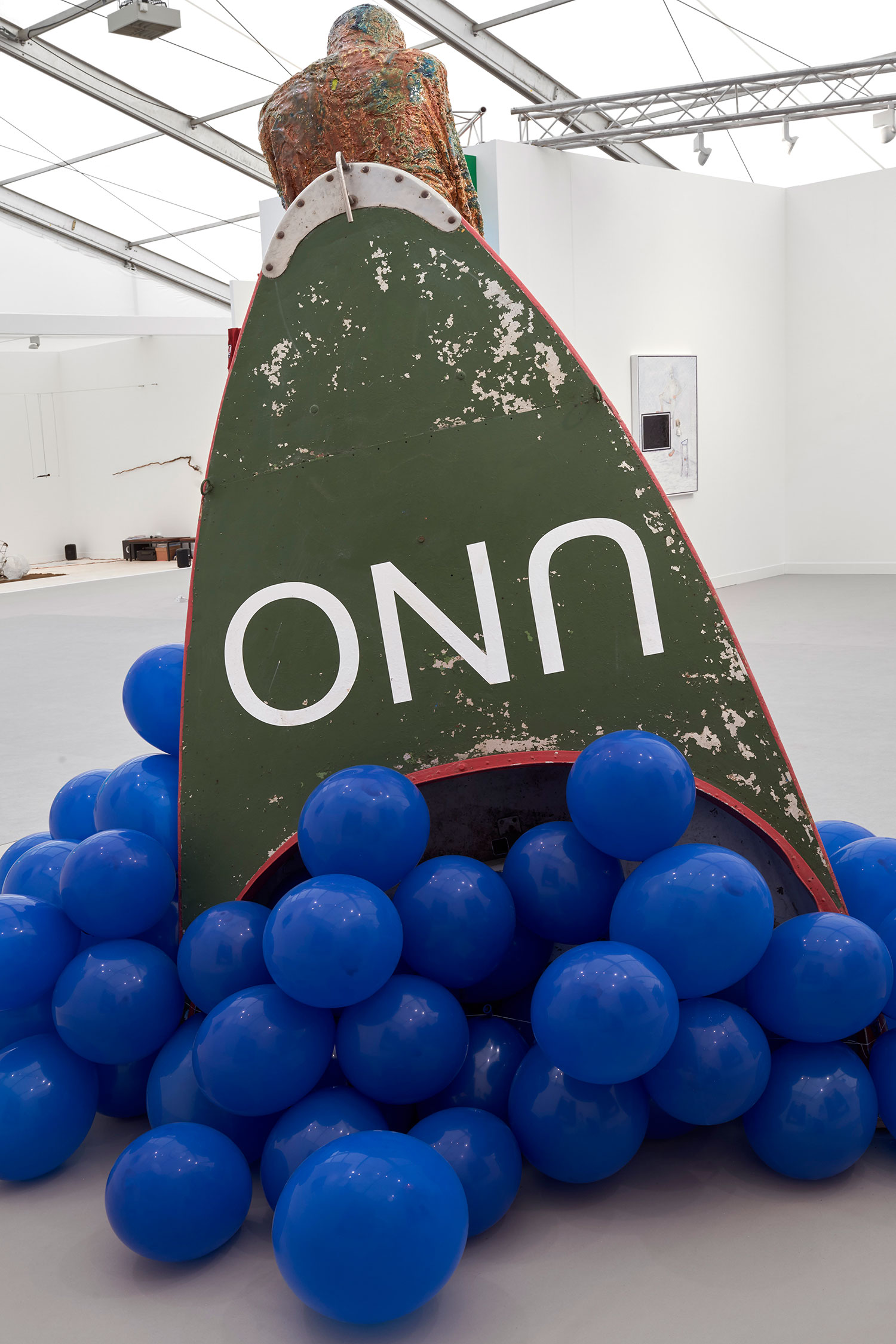Condo, the brainchild of Vanessa Carlos of Carlos/Ishikawa, is back to liven up an otherwise quiet moment in London’s art calendar. The format is simple: thirty-six international galleries are hosted across fifteen of the most progressive commercial spaces in London.
Information is kept to a minimum: a frenziedly flashing map is all there is to the initiative’s website, a red snake traversing the city’s geography and showing the way from newly bohemian Peckham in the South to Soho and to the old vanguard East End. Originally conceived as a collaboration among emerging galleries, Condo has doubled in size from last year, and endorsements by longer-standing galleries, such as Sadie Coles HQ, Greengrassi, Herald Street, Maureen Paley and The Approach, are a testament to the success of its inaugural edition.
The event kicked off with the heaving opening of “Room” at Sadie Coles HQ, an all-women show featuring sculptural installations and photographic works, juxtaposed with a solo presentation of Martine Syms by Bridget Donahue Gallery (New York). A group of photographs of varying sizes frames representations of black subjects distanced by partial views and reflections or by historical space. The short looped video Lesson LXXV (2017), embedded horizontally in a purple plinth, pictures the artist close up, her face and T-shirt drenched with white milk — a reference to recent footage of demonstrators using milk to counteract the effects of teargas. Syms’s personal reflection on the mechanisms of production of black identity resonates poignantly with the works in the group exhibition, which challenge, with a rebellious attitude, the boundaries — physical and psychological — of the space assigned to femininity.
In Peckham, Arcadia Missa and VI, VII Gallery (Oslo) opted for a collaborative presentation of London-based artists. Emma Talbot’s colorful open tent, suspended from the vaulted ceiling, creates the feeling of an intimate, sacred space at the center of the gallery. Through delicately hand-drawn vignettes and vibrant patterns, You Do Not Belong To You (Universal Story) (2016) narrates the story of the Red Tent, a traditional space for women to take refuge and find mutual support. A theatrical dimension was brought by Than Hussein Clark’s set of elegantly balanced enamel and hand-blown glass lampposts, which seemed to cast Eloise Hawser’s minimal stretched fabric screen — embedded with cryptic security patterns — and Brad Grievson’s abstract patchwork canvas as enigmatic characters on a stage.
At Emalin, the gallerists were planning a group exhibition about the deconstruction of the face as a site of identity, and the work of Shana Moulton — represented by Gregor Staiger (Zurich) — fitted the brief perfectly. Moulton’s video Sand Saga (2008) riffs on new-age motifs as the features of the artist’s alter ego, as well as the objects in her boudoir, undergo psychedelic transmutations. Two headless mannequins — their faces reproduced on video tablets attached to their derrieres — complement the presentation, one aptly titled Medusa’s Stare (2016). A number of sculptural works are lined up along the perimeter of the space, like a curious crowd looking in at the visitors. One is quickly caught scanning their shapes in search of the identifying markers of human features: welded from found steel objects, Melvin Edwards’s contorted mask Iraq (2003) was made in response to the war’s dramatic events; Nicholas Cheveldave created an uncanny medical cast of Kaspar, a robot with minimal facial expressions that helps children with autism; The Grantchester Pottery deconstructed the fragile outline of muse Dora Maar’s eyes, mouth, nose and tears in glazed stoneware gracefully suspended from hemp cords.
The last stop was at Carlos/Ishikawa with guests Tommy Simoens (Antwerp) and ShangART (Shanghai), where the gallery was transformed into an arena. One was invited onto stadium seating among Oscar Murillo’s life-size effigies of Columbian workers, their papier-mâché heads simultaneously highly detailed and expressionless. From time to time, a guest singer animated the scene, bursting forth with a cappella love songs in Spanish. Ouyang Chun’s heavy impasto triptych of prostitutes under a spotlight and Yutaka Sone’s crude scale model of an Aztec theme park reinforced a sense of discomfort with being the onlooker or the subject of display.
Although it is hard to define what Condo is, the strength of its proposition lies in its ability to mobilize like-minded people to create productive collaborations, both locally and internationally. In a city like London, dispersive by nature and driven by capitalist gain, it seems vital to nurture a sense of connection and to take action.

